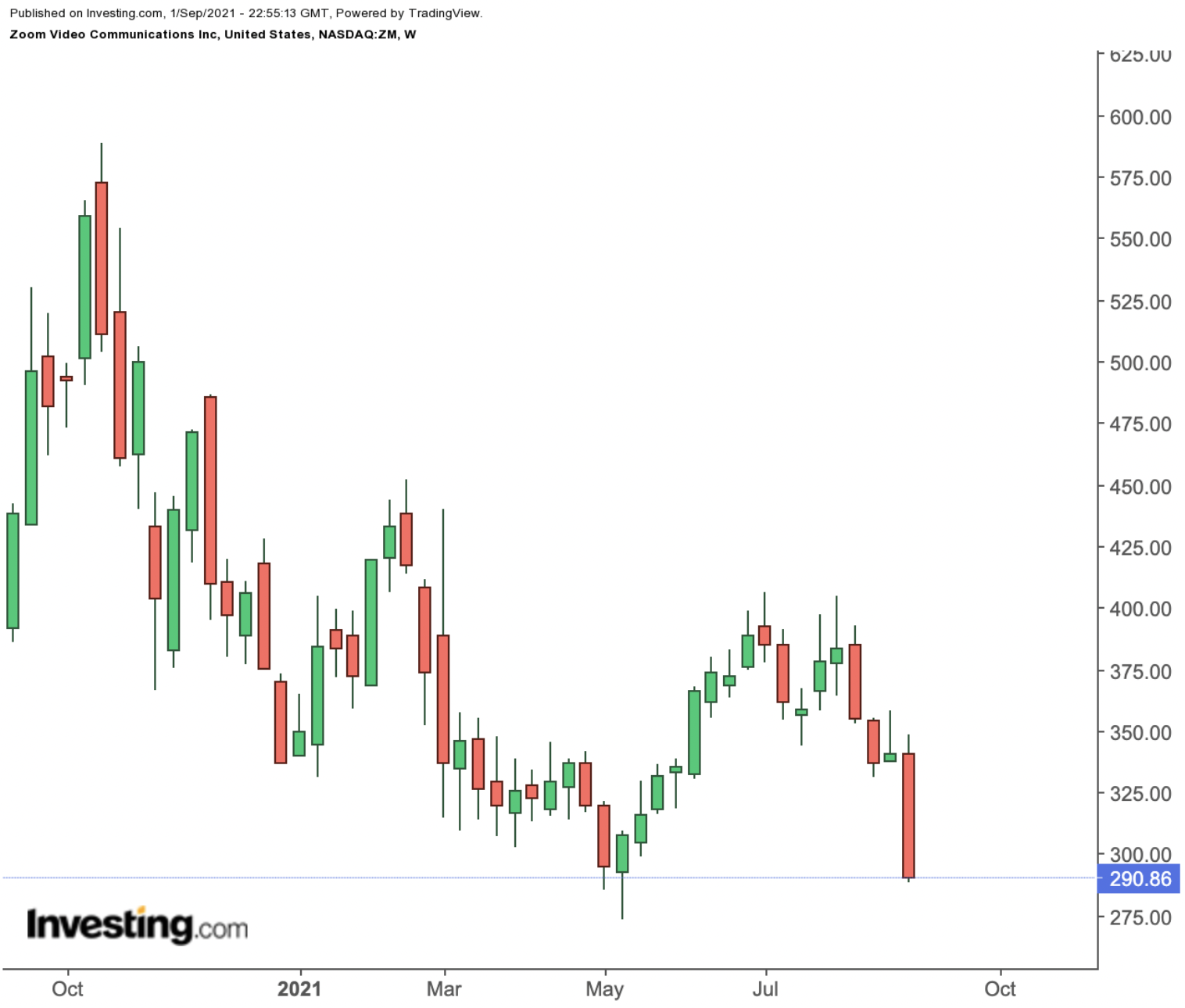It seems Zoom Video Communications (NASDAQ:ZM) is becoming a victim of its own success. After signs that the video-conferencing platform's pandemic era growth is coming to an end as schools and offices reopen, investors have punished the stock.
On Tuesday, shares of the San Jose, California-based company plunged about about 17%, after management provided a sales forecast for the current quarter that fell short of some analysts’ estimates.
The stock closed yesterday at $290.86, down more than 12% for the year after surging five-fold in 2020, when the use of its communication platform exploded in the midst of the pandemic. But that meteoric growth is slowing earlier than many analysts had forecast.

Zoom revenue rose 369% in the 2020 fiscal fourth quarter, 191% in the first quarter of 2021 and 54% in the three months that ended July 31. The company’s forecasts indicate sales may increase just 15% in the fiscal fourth quarter.
Amid this quick reversal and the tough comparisons to blockbuster performance during the past year, the challenge for Chief Executive Officer Eric Yuan is to convince investors that growth won’t stall in the post-pandemic environment.
Yuan is trying to diversify Zoom’s offerings. He has been adding premium products like a cloud-based phone system, to appeal to larger corporations, as well as small and mid-sized businesses.
Revenue Diversification
In July, the company agreed to acquire Five9 (NASDAQ:FIVN) for $14.7 billion to expand in the call-center software market. The acquisition will help Zoom expand in the cloud-based contact-center market, which operates over the internet. According to the company, the adoption of the technology has accelerated during the pandemic, when many contact center staff have been working remotely.
Some analysts and investors believe Zoom will continue to remain relevant in the new workplace and education environment, and investors should stick with this stock. Tech investor Cathie Wood was apparently unfazed by Zoom’s post-earning decline, according to a Bloomberg report, as her ARK Investment Management bought almost 200,000 shares of the video-conferencing company for at least two of its exchange-traded funds.
The noted investor said in July it would be a “mistake” to sell stay-at-home winners like Zoom as the pandemic-induced demand waned.
The weak sales guidance, however, triggered many downward assessments from Wall Street analysts. Bank of America, which has a buy rating on Zoom, cut its price target to $385 from $480. In a note to clients, it said:
“We believe Zoom’s 2H22 represents a transitory period with lower growth as [small and mid-size business]/consumer becomes a significant headwind, masking stronger trends for enterprise that likely drive a growth reacceleration in FY23.”
Baird, which has an “outperform” rating on Zoom, also cut its price target to $380 from $445 after the latest earnings report, saying shares have become attractive after the recent slide.
Its note to clients said:
“The company cited weaker small and medium (SMB) online expectations, particularly consumer use, as travel and face-to-face activities have increased. While disappointing, the enterprise and Zoom Phone trends remain strong, and underpin our long-term bullish stance on the platform opportunity. SMB uncertainty could remain a near-term overhang, though we view shares as attractive for long-term investors.”
Bottom Line
Zoom’s growth is slowing after an unusual spike during the pandemic. That means investors shouldn’t expect a repeat in 2021 of the kind of rally seen last year. But there is near consensus in the market that the company has a bright future in the post-COVID world, making its stock a suitable candidate for long-term investors after its current weakness.
